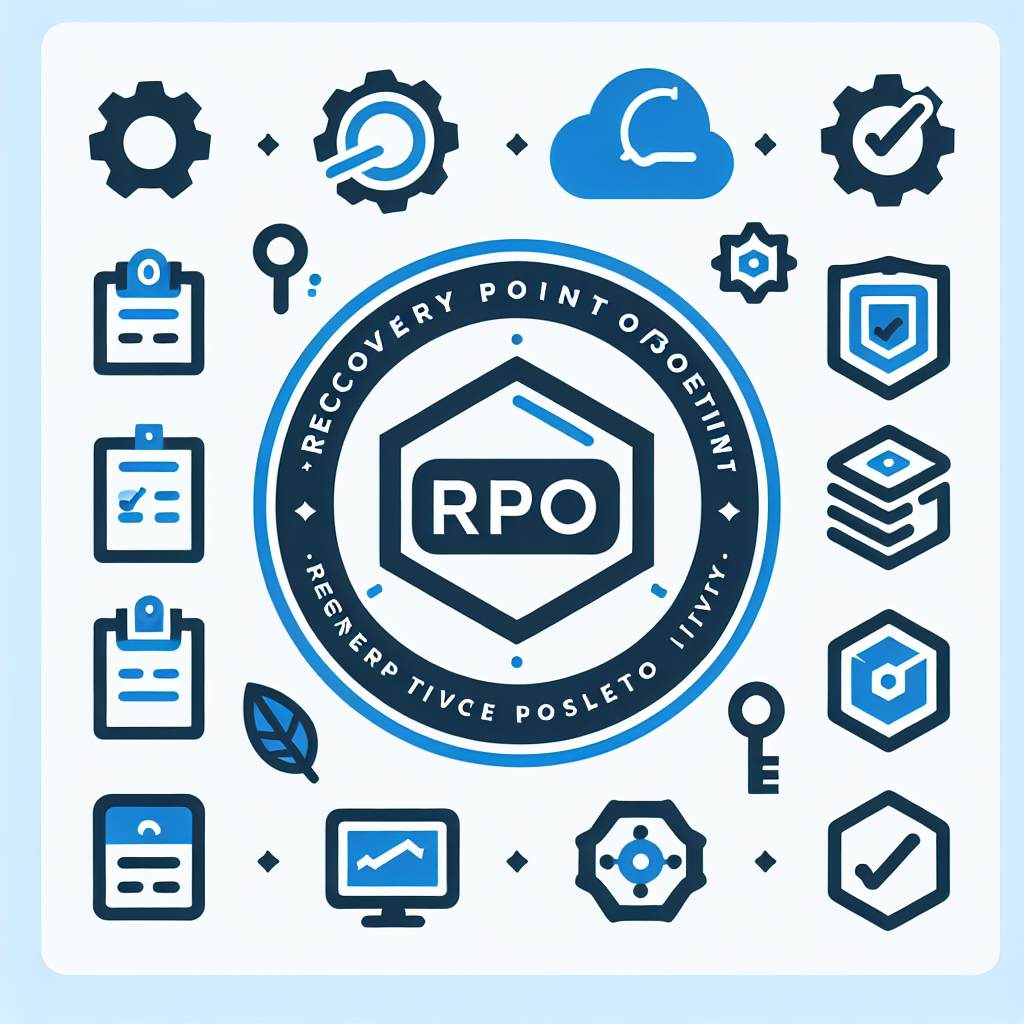
Quick answer: RPO is the amount of recent data an organization is willing to lose if systems fail. It describes the maximum acceptable age of files or database records restored after an outage and guides backup frequency and data replication choices.

RPO is the maximum period of data loss you accept after an incident. It answers "how far back must backups go" so restored data is recent enough to keep operations viable. RPO is measured in time — minutes, hours, or days — and directly influences backup cadence. Setting a tight RPO means more frequent snapshots or continuous replication. A relaxed RPO can reduce backup costs but increases potential data loss.
Start by identifying critical datasets and the point-in-time recovery window you need. Measure RPO as the time between the last safe backup and the failure moment. For example, an RPO of four hours implies scheduling backups or replication so no more than four hours of new data is lost. Tracking application-level change rates and transaction volumes helps validate that backups meet the target. Regular audits and restore drills prove the RPO is achievable.
RPO defines acceptable data loss; RTO defines how long systems can be unavailable. RPO is data-focused (how much data), RTO is service-focused (how long services can be down). Both figures drive disaster recovery design but require different controls: backups and replication for RPO, failover and recovery automation for RTO. Balancing them shapes recovery investments and priorities. You should set both targets together so they align with business needs.
Decision-makers should include IT, business owners, and compliance stakeholders. IT provides technical feasibility and cost estimates; business teams define the tolerance for lost transactions or records. Regulatory or contractual obligations may enforce specific RPO targets for certain data types. A cross-functional discussion ensures the RPO matches operational, legal, and financial requirements. Document the agreed targets and the rationale that supports them.
Zero RPO means you cannot tolerate any data loss. It’s possible with continuous data replication or synchronous mirroring, but it’s expensive and complex. Zero RPO is typically reserved for the most critical systems, such as real-time financial transaction processing. Most organizations choose near-zero RPO for a few services and looser RPOs elsewhere to control cost. Always weigh the trade-offs before pursuing zero RPO across the board.
Industries set RPOs based on risk and the cost of losing data. Examples include: hospitals aiming for minutes for patient records, financial services requiring seconds to minutes for transactions, and online stores often tolerating a few hours for order data. Those are examples — your organization must map its own processes to sensible targets. Use real workload metrics to pick an RPO that balances risk and budget.
Backup frequency directly determines the RPO: the more often you capture data, the lower the RPO. Retention policies don’t change RPO but affect how far back you can restore. Combining frequent snapshots with tiered retention (short-term frequent copies and longer-term archived copies) manages both recovery freshness and storage cost. Consider differential or incremental backups to reduce the impact on storage and network while meeting RPO goals. Test restores to confirm the backups contain the needed data.
Cloud platforms often enable near-real-time replication, making tighter RPOs feasible without as much on-prem infrastructure. Services like block or database replication can reduce data-loss windows to seconds or minutes. Cloud-based backups also simplify geographic redundancy, which supports resilient RPOs across datacenters. However, cloud options still require configuration, cost analysis, and regular verification to ensure SLAs are met. Don’t assume replication equals zero risk — validate performance and failover behavior.
CDP captures every write as it happens, enabling very small or near-zero RPOs for selected systems. It’s ideal for workloads where every transaction matters, such as payment systems or electronic medical records. CDP solutions can be more complex to operate and may require additional storage and bandwidth. Use CDP selectively for high-value systems and combine it with less intensive backups for other data. Monitor and test CDP to ensure point-in-time recovery works as expected.
Validate RPO through scheduled restore exercises and simulated outages. Regularly restore backups to a test environment and compare the recovered state to the expected point-in-time. Track how long restores take and whether the restored dataset meets the RPO window. Include application teams so dependencies and transaction consistency are checked. Use the results to adjust backup cadence, replication settings, or target RPO values.
Tightening RPO increases costs and operational complexity. Expect higher storage, more network usage, and potential performance impacts from frequent snapshots or synchronous replication. It may also require more complex recovery orchestration and faster failover processes. Conversely, a loose RPO reduces these costs but raises exposure to data loss. Make trade-offs deliberately and align them with business impact analyses.
Start by inventorying critical data and business processes, then assign an acceptable data-loss window for each. Map technologies (backups, replication, CDP) that meet those windows and estimate costs. Implement chosen solutions, define retention and verification processes, and run restore tests on a schedule. Document procedures, assign responsibilities, and review the targets after major changes. Maintain a continuous improvement cycle so RPOs stay aligned with evolving needs.
Learn more about recovery planning and how Palisade supports backup validation and recovery orchestration on our learning hub: Recovery planning with Palisade.
No. Treat systems differently based on criticality — mission-critical services need tighter RPOs than archival systems.
Not necessarily. Short RPOs mean fresher data, but restores may still take time; plan for both recovery speed and data currency.
Review RPOs after major application changes, regulatory updates, or at least annually to ensure alignment with business priorities.
Backups are part of the solution; replication and recovery orchestration are often required to meet tight RPOs and restore consistency.
Ownership is shared: IT enforces the technical controls, but business leaders own the acceptable loss thresholds.